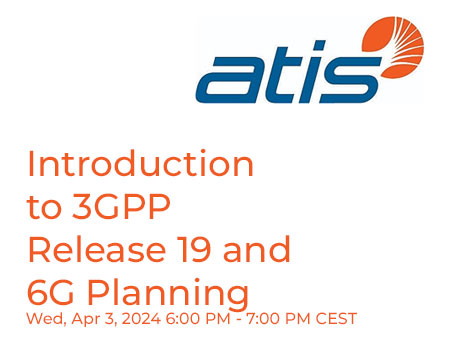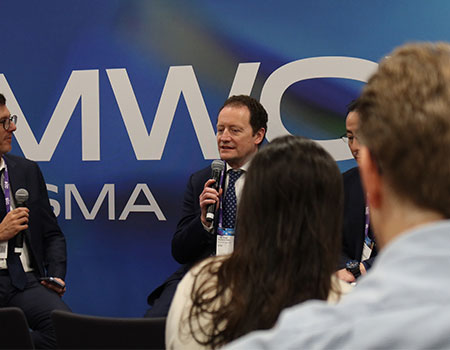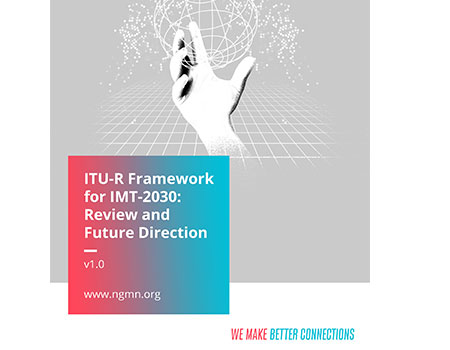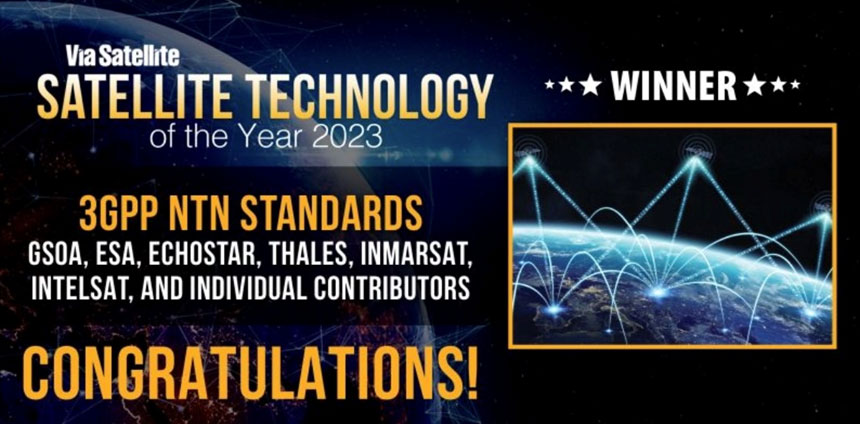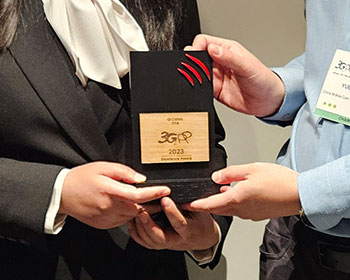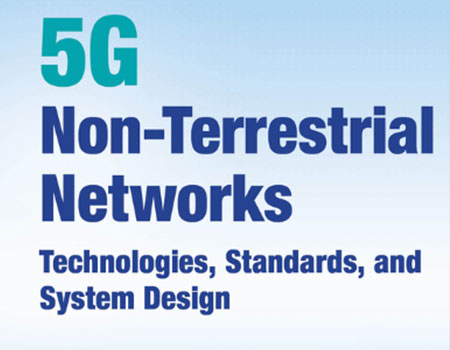5GAA study of spectrum needs for safety related ITS
April 2021 (5GAA Study dated 25/6/2020)
By Reza Karimi (Huawei, UK), Markus Mueck (Intel, Germany), Yan Li (Qualcomm, China), Stefano Sorrentino (Ericsson, Sweden) - Article first published in HIGHLIGHTS Issue 02, March 2021.
5GAA has conducted a study in relation to the spectrum needs of use cases for intelligent transport systems (ITS) and advanced driving as implemented by cellular V2X (C-V2X) technologies.
Starting from a list of over 40 use cases, we first categorise these as “initial/day-1” or “advanced”. It is the view of the 5GAA that LTE-V2X and NR-V2X are the most suitable technologies for the support of day-1 ITS and advanced driving use cases, respectively. We subsequently classify these as
- use cases which involve direct communications among road users or between road users and ITS roadside infrastructure (so-called V2V, V2I, V2P) as supported by the C-V2X (PC5) interface in the 5.9 GHz band harmonised globally for ITS, and
- use cases which involve network-based communications between road users and mobile network base stations (so-called V2N) as supported by the C-V2X (Uu) interface in bands designated and licensed for use by mobile communication networks,
where the term “road user” includes vehicles and pedestrians.
We further sub-classify the use cases which use direct communications according to whether they employ continual (typically repetitive) messages or event triggered messages, respectively.
For each sub-class of use case, we then estimate the spectrum needs for the relevant V2V, V2P, V2I, or V2N communications by accounting for
- road geometries, e.g., freeways and intersections,
- the geographic density and speed of the road users,
- the size, repetition rate, data rate, or latency of the required messages for the support of the service, and
- the effective spectral efficiency of the relevant C-V2X radio access technology.
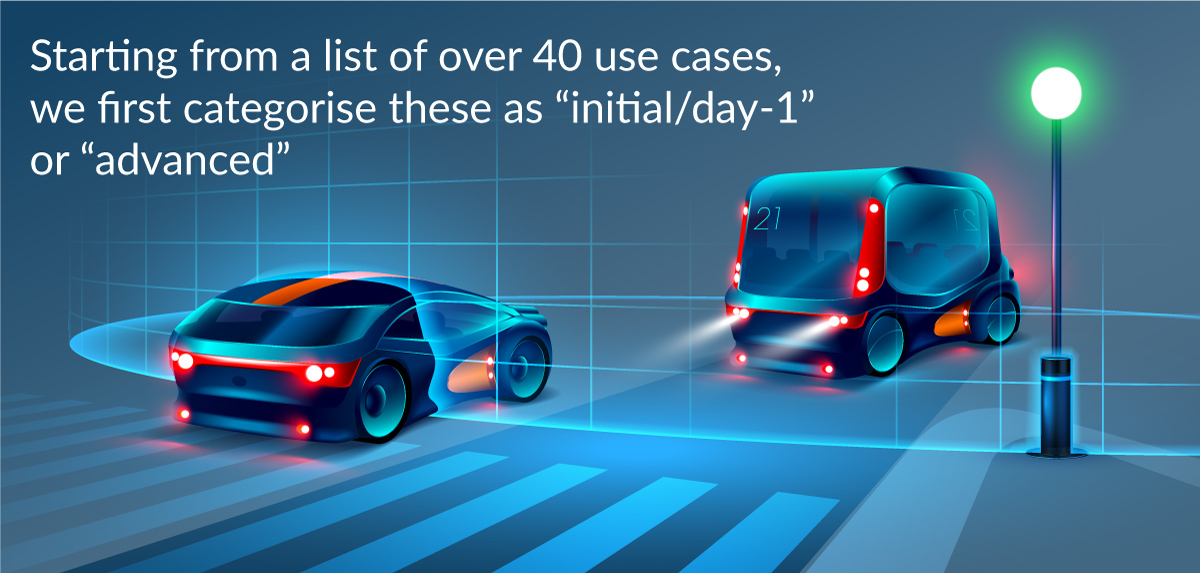 Based on the results of our studies of the spectrum needs of C-V2X direct communications (V2V/I/P), we can draw the following conclusions:
Based on the results of our studies of the spectrum needs of C-V2X direct communications (V2V/I/P), we can draw the following conclusions:
- We expect that the delivery of day-1 use cases via LTE-V2X for the support of basic safety ITS services will require between 10 and 20 MHz of spectrum at 5.9 GHz for V2V/I communications.
- We expect that the delivery of advanced use cases via LTE-V2X and NR-V2X for the support of advanced driving services will require an additional 40 MHz or more of spectrum at 5.9 GHz for V2V/I/P communications.
The above conclusion with regards to advanced use cases deserves some elaboration:
- Some important advanced driving use cases (e.g. High-Definition Sensor Sharing) involve the ability of road users to share their processed sensor data with other road users on a continual basis for what is known as cooperative perception, to provide advanced driver assistance and to facilitate autonomous driving. The appropriate amount of sensor data which should be shared is an open question for the industry, and directly impacts the required spectrum. Our estimate of spectrum needs for these use cases is 40 MHz or more depending on the extent of information sharing.
- Many other advanced driving use cases are event triggered (e.g. Cooperative Manoeuvres), that is to say, messages are exchanged over the air in response to a desire by a road user to undertake a specific manoeuvre (e.g., changing lanes, joining a freeway, crossing an intersection, or the like). Here, the road user shares its intended trajectory with other road users as part of a handshake exchange of information, in order to provide advanced driver assistance and to facilitate autonomous driving. The contribution of event triggered use cases to the overall ITS spectrum needs is stochastic, in the sense that such use cases may or may not occur at the same time, and this can result in a highly time variable demand for spectrum at any given location.
As a result, the evaluation of the spectrum needs for advanced use cases is not a trivial task. Nevertheless, it is clear that the 70-75 MHz of ITS spectrum in the 5.9 GHz band (as presently allocated in many regions and under consideration in other regions) is needed to support the basic safety and advanced use cases under consideration today. Notably, it is the view of the 5GAA that the choice of using LTE-V2X or NR-V2X in any given channel in the 5.9 GHz band should be market-led. Like any emerging sector, there could be unforeseen ITS use cases that would require even more spectrum as the market evolves.
As the ITS industry develops further, and we begin to better understand the demands of advanced driver assistance and autonomous driving, we will assess the extent to which the 5.9 GHz band (5850-5925 MHz) – which is globally harmonised for ITS by the ITU-R – is sufficient to meet the spectrum needs of the road users, and whether additional spectrum designated for ITS will be required.
Furthermore, based on the results of our studies of the spectrum needs of C-V2X network-based (V2N) communications, we can draw the following conclusions:
- At least 50 MHz of additional service-agnostic low-band (< 1 GHz) spectrum would be required for mobile operators to provide advanced automotive V2N services in rural environments with affordable deployment costs.
- At least 500 MHz of additional service-agnostic mid-band (1 to 7 GHz) spectrum would be required for mobile operators to provide high capacity city wide advanced automotive V2N services.
In the above, the term “additional” means availability of spectrum in addition to the bands that are currently identified for IMT use by mobile communication networks.
The 5GAA places great value on the importance of V2N communications in enabling future advanced driving use cases, as supported by the Uu interface of C-V2X. Accordingly, the 5GAA recommends that national and regional administrations ensure the availability of sufficient spectrum for mobile communication networks in the so-called low-bands and mid-bands for the support of services, including ITS, in the coming decade.
It should be emphasised that unless otherwise stated the spectrum needs values estimated in this report are based on the assumption of a 100% penetration of ITS equipment among the population of road users. Furthermore, the characteristics of some advanced use cases, and the approach to their modelling are still under discussion. Finally, the 3GPP specifications on C-V2X allow for a broad range of parameterisations, including different trade-offs between reliability and redundancy levels (e.g., packet retransmissions optionally employing a two transmission time intervals mode); it should be noted that increased levels of redundancy will affect the spectrum needs requirements correspondingly. Refined spectrum needs estimates for these use cases will be included in a future edition of this report.
The 5GAA study of spectrum needs for safety related intelligent transportation systems – day 1 and advanced use cases can be accessed from the web site.

 Partners News
Partners News 